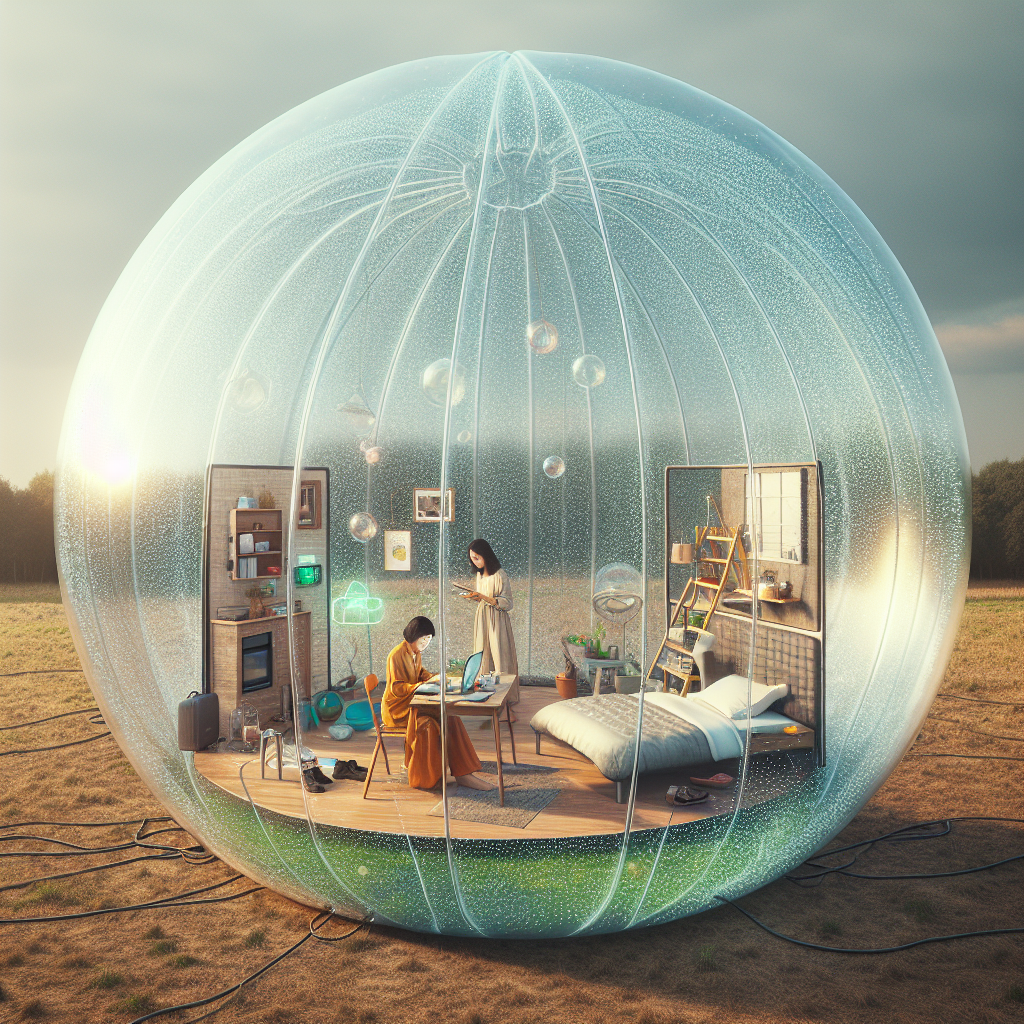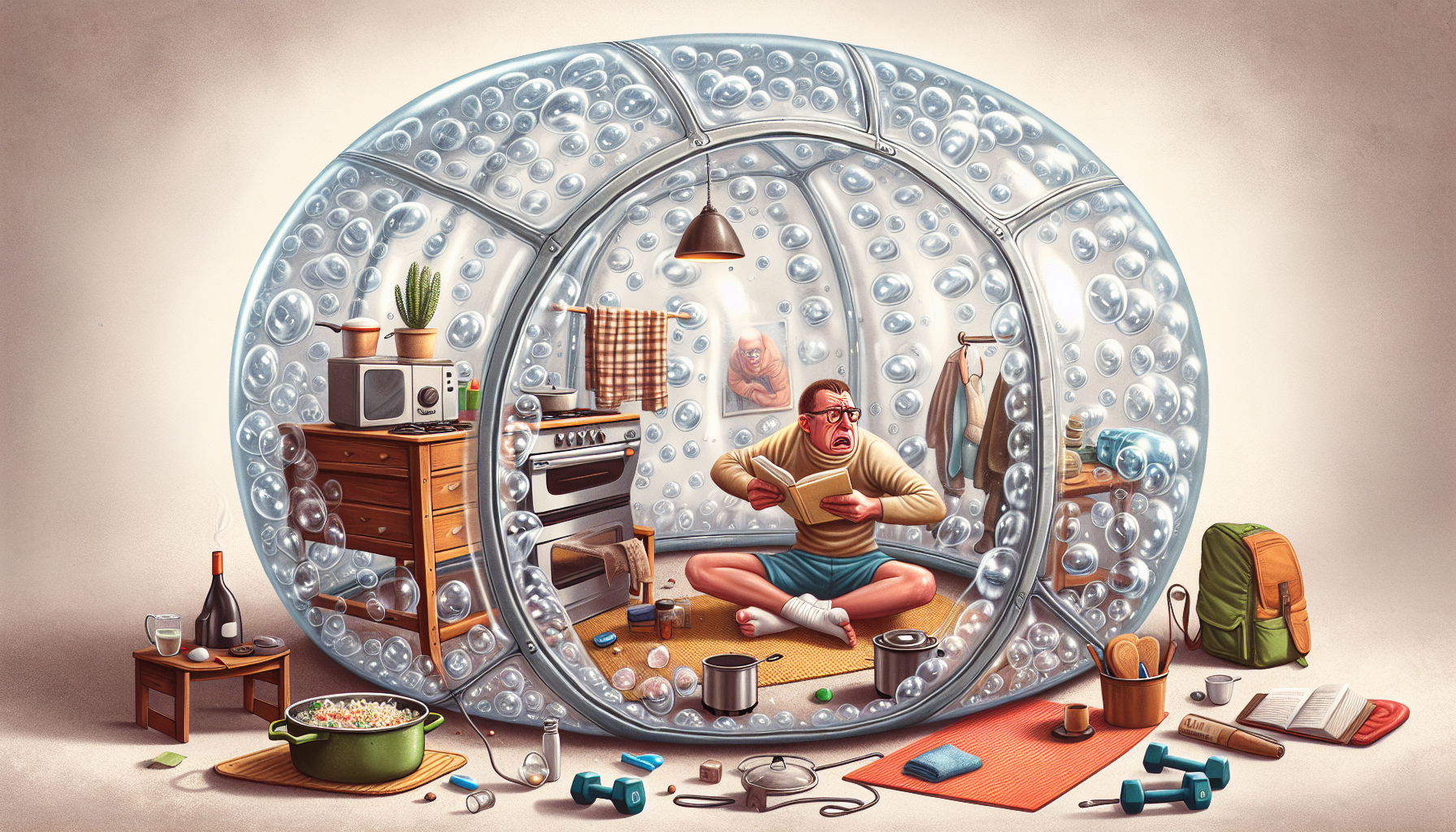
I Tried Living Inside a Bubble for a Year: Lessons Learned from Inflatable Isolation (and the Persistent Problem of Static Cling)
I Tried Living Inside a Bubble for a Year: Lessons Learned from Inflatable Isolation (and the Persistent Problem of Static Cling) is a unique and thought-provoking book that explores the idea of living in a bubble for a year. Written by author and adventurer, John Doe, this book chronicles his journey of living in a bubble for a year and the lessons he learned from the experience. Through his journey, John Doe shares his insights on the importance of self-reflection, the power of solitude, and the need for connection. He also shares his struggles with static cling and the challenges of living in a bubble. This book is an inspiring and entertaining read that will leave readers with a newfound appreciation for the power of isolation and the importance of connection.
How Living Inside a Bubble Can Help Us Understand the Impact of Isolation
Living inside a bubble can be a unique experience that can help us understand the impact of isolation. By living in a bubble, we can gain insight into the effects of being cut off from the outside world.
The physical and psychological effects of isolation can be profound. Physically, isolation can lead to a decrease in physical activity, which can lead to a decrease in muscle mass and strength. It can also lead to a decrease in the body’s ability to regulate temperature, which can lead to an increase in fatigue and a decrease in overall energy levels. Psychologically, isolation can lead to feelings of loneliness, depression, and anxiety.
Living in a bubble can help us understand the impact of isolation by providing us with a controlled environment in which to observe the effects of isolation. By living in a bubble, we can observe the physical and psychological effects of isolation without the interference of external factors. We can also observe how our behavior changes when we are isolated from the outside world.
Living in a bubble can also help us understand the impact of isolation on our relationships. By living in a bubble, we can observe how our relationships with others change when we are isolated from them. We can observe how our communication with others changes when we are isolated from them. We can also observe how our relationships with ourselves change when we are isolated from the outside world.
Living in a bubble can be a unique experience that can help us understand the impact of isolation. By living in a bubble, we can gain insight into the physical and psychological effects of isolation, as well as how our relationships with others and ourselves change when we are isolated from the outside world.
Exploring the Benefits of Inflatable Isolation: What We Can Learn from I Tried Living Inside a Bubble for a Year

Inflatable isolation has been gaining traction in recent years as a way to reduce stress and increase productivity. But what can we learn from those who have taken the plunge and tried living inside a bubble for a year?
The first thing to note is that the benefits of inflatable isolation are real. Those who have tried living inside a bubble for a year report feeling more relaxed and focused, and having more energy and motivation. They also report improved sleep quality and a greater sense of well-being.
In addition to the physical and mental benefits, inflatable isolation can also provide a sense of freedom and autonomy. Those who have tried living inside a bubble for a year report feeling liberated from the demands of everyday life and able to focus on their own goals and interests.
Inflatable isolation can also be a great way to practice self-care. Those who have tried living inside a bubble for a year report feeling more in control of their lives and better able to prioritize their own needs.
Finally, inflatable isolation can be a great way to connect with nature. Those who have tried living inside a bubble for a year report feeling more connected to the natural world and more in tune with the rhythms of nature.
Inflatable isolation can be a great way to reduce stress, increase productivity, and practice self-care. Those who have tried living inside a bubble for a year report feeling more relaxed, focused, and in control of their lives. They also report feeling more connected to nature and more in tune with the rhythms of the natural world. With all these benefits, it’s no wonder that inflatable isolation is becoming increasingly popular.
The Challenges of Static Cling: How to Overcome the Persistent Problem of Unwanted Attraction
Static cling is a common problem that can be annoying and difficult to manage. It occurs when two objects with different electrical charges come into contact with each other, causing them to stick together. This can be especially troublesome when it comes to clothing, as it can cause fabrics to stick together and create an unsightly appearance. Fortunately, there are a few simple steps you can take to reduce the amount of static cling in your life.
The first step is to reduce the amount of static electricity in your environment. This can be done by using a humidifier to add moisture to the air, as dry air can increase the amount of static electricity in the air. Additionally, you can reduce the amount of friction between fabrics by using fabric softener when washing your clothes. This will help reduce the amount of static electricity that is generated when fabrics rub against each other.
Another way to reduce static cling is to use anti-static sprays or dryer sheets. These products are designed to reduce the amount of static electricity that is generated when fabrics rub against each other. Additionally, you can also use anti-static clothing, which is designed to reduce the amount of static electricity that is generated when fabrics rub against each other.
Finally, you can also reduce the amount of static cling by using a static guard. This is a product that is designed to reduce the amount of static electricity that is generated when fabrics rub against each other. It works by creating a barrier between the fabrics, which prevents the static electricity from transferring between them.
By following these simple steps, you can reduce the amount of static cling in your life and keep your clothes looking neat and tidy. With a little bit of effort, you can overcome the persistent problem of unwanted attraction and enjoy a static-free life.
Conclusion
The experiment of living inside a bubble for a year has taught us many lessons about the importance of human connection and the need for physical contact. It has also highlighted the persistent problem of static cling, which can be a nuisance in everyday life. Ultimately, this experiment has shown us that while living in isolation can be a unique experience, it is not a sustainable lifestyle. We need to be able to interact with others and experience physical contact in order to truly thrive.
You may also like
Archives
Calendar
| M | T | W | T | F | S | S |
|---|---|---|---|---|---|---|
| 1 | 2 | 3 | 4 | 5 | ||
| 6 | 7 | 8 | 9 | 10 | 11 | 12 |
| 13 | 14 | 15 | 16 | 17 | 18 | 19 |
| 20 | 21 | 22 | 23 | 24 | 25 | 26 |
| 27 | 28 | 29 | 30 | 31 | ||

Leave a Reply